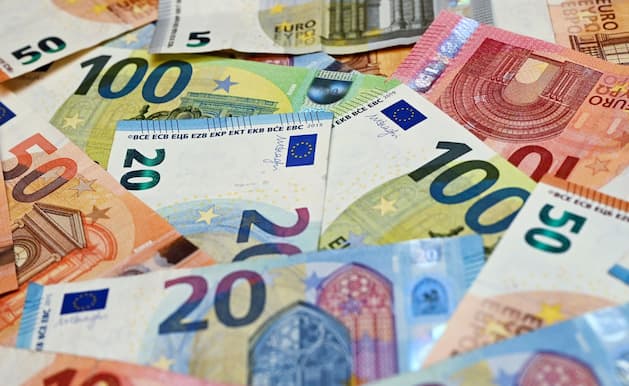Inflation has recently eased somewhat in the US and the euro area. But the pressure on the central banks remains high – because consumer prices are still far too high. The Fed has now made it clear that cutting interest rates in the near future is not an option.
After a moderate interest rate hike by the US Federal Reserve, the European Central Bank (ECB) is also likely to raise its key interest rate. As expected, the Fed raised its key interest rate by 0.25 percentage points on Wednesday due to persistently high inflation. It was the eighth straight hike and the smallest step since March. Fed Chair Jerome Powell promised further rate hikes. With regard to the fight against high consumer prices, he emphasized: “I think it would be very premature to announce victory.”
The ECB is also likely to continue its fight against inflation in the euro area at its interest rate meeting. The central bank in Frankfurt will announce the results of the monetary policy meeting in the afternoon (2:15 p.m.). The end of the interest rate hikes has not yet been reached, ECB President Christine Lagarde recently confirmed several times. In December, the ECB raised the key interest rate in the euro area by 0.50 percentage points to 2.50 percent. At the time, Lagarde promised further increases of this magnitude “for some time”. Since July, the ECB has raised interest rates four times in a row.
Rising interest rates can counteract high consumer prices because credit becomes more expensive and this slows down demand. Growth is slowing, companies cannot simply pass on higher prices, and ideally inflation is falling. In the medium term, the Fed and the ECB are aiming for an average inflation rate of around 2 percent. In Germany, Europe’s largest economy, life had become more expensive last year than at any time since the Federal Republic was founded more than 70 years ago. In the USA, too, inflation was at times higher than it had been in decades.
Recent data shows that high inflation in the US is on the wane. Recently, the inflation rate in the world’s largest economy had continued to fall – a sign of the first successes of the strict monetary policy. In December, consumer prices rose by 6.5 percent compared to the same month last year. But Fed Chair Powell stressed that the slowdown in inflation is still “in the early stages”. He made it clear that it would not be a few months from now to see that the central bank had not done enough to bring inflation under control. “I just don’t see that we’re going to cut rates this year,” he clarified.
In the euro zone, too, inflation continued to weaken at the beginning of the year due to a lower rise in energy prices. According to an initial estimate by the statistics office Eurostat, consumer prices rose by 8.5 percent in January compared to the same month last year. This is the lowest inflation rate since May 2022. How prices in Germany developed in January is still unclear. Due to a technical problem, the Federal Statistical Office is not planning to publish it until next week. ECB boss Lagarde has recently repeatedly emphasized that inflation in Europe is still “much too high”.
According to the theory, with a tight monetary policy the risk also increases that the central banks slow down the economy so much that the economy is stalled. Current figures on economic growth in the USA reduce fears of a possible recession. But Powell is particularly concerned about the labor market: “The labor market is still not in balance. The demand for labor far exceeds the supply of available labor.” Such a situation can lead to a wage-price spiral and rekindle inflationary pressures. So far, the Fed’s tight monetary policy has not weakened the US labor market.
A turbulent year lies behind the US Federal Reserve. In 2022, it raised the key interest rate several times by a remarkable 0.75 points – but then slowed down by 0.5 points in December. The recent increase is therefore comparatively moderate in view of past decisions. The euro exchange rate rose on Wednesday evening after the announcement of the new rate hike. The next Fed meeting is in March.















